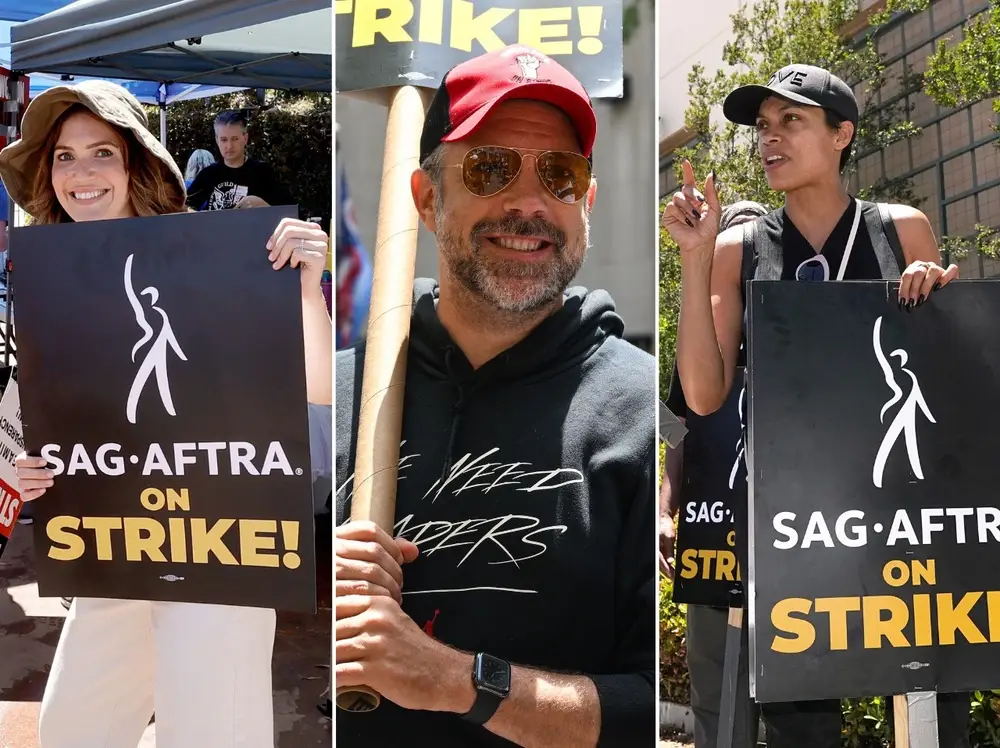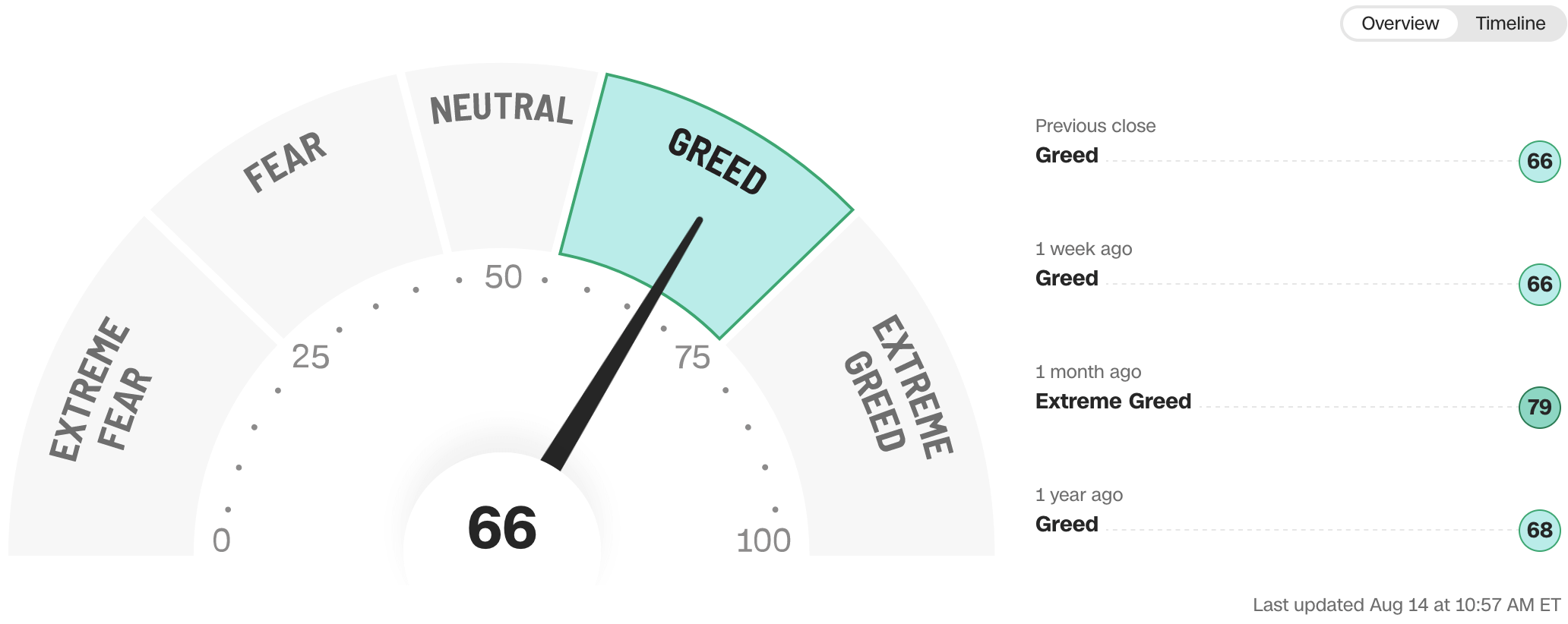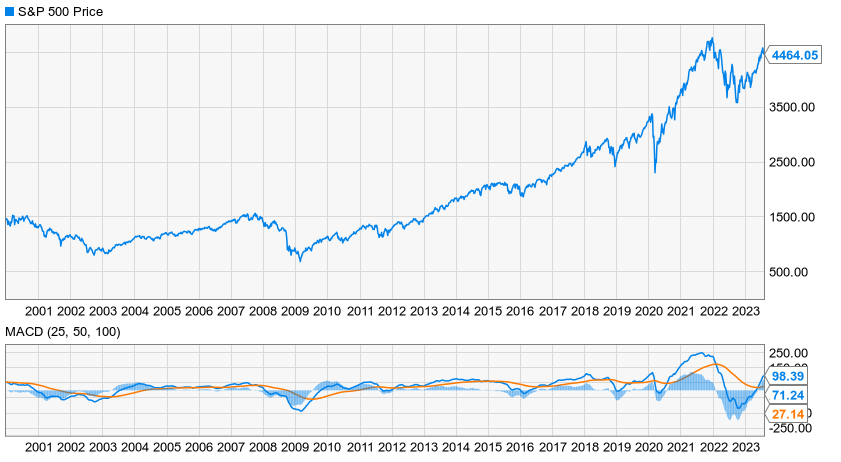Market Overview
This month's models have been posted.Please be advised of the following:
Labor’s 21st century moment
Organized labor has been much in the news lately. From restaurant workers to Hollywood stars, it seems like everyone is walking a picket line, or deciding whether to cross one or not.
This is an important topic to cover here because many of the readers of this newsletter might soon be called on to strike or to act in sympathy with a strike. We’re aware that political temperatures are running high and that this is one of those subjects which is bound to touch a nerve, so let’s step back and remember that this is a financial newsletter, not a political one. We want to discuss what the recent spate of union activity means to your income and your investments.
To the best of our ability, we’ll now wend our way together – factually, dispassionately – through the current state of the American labor movement.
The headlines
The following work stoppages are currently ongoing:
- The Writers Guild of America (WGA) has been on strike against the major Hollywood studios since May 2. The Screen Actors Guild-American Federation of Television and Radio Artists (SAG-AFTRA) joined the strike July 14. It is important to note that, while virtually all of WGA’s 11,500 members are on the picket lines, only 65,000 of SAG-AFTRA’s 160,000 are. The rest are on independent projects or are working under contracts unrelated to the major studios. Both the writers and actors have similar concerns. As content moves from networks to streaming services, fewer episodes constitute a season, and fewer seasons constitute a good run. Both creative guilds want more money per episode to compensate for the lost work. New technology also figures in. Artificial intelligence can write scripts, so WGA members want to be paid for the writing they’ve done that is being digitized as training data for AI. And AI can take anyone’s image and voice and make it do or say anything. SAG-AFTRA members want to be paid for any digitized reuse of their likenesses. Negotiations had broken down at one point, but both the unions and the Alliance of Motion Picture and Television Producers (AMPTP), the studios’ bargaining agent, are back to the table.
- Hotel workers in southern California have been on strike since July 1. Up to 15,000 workers at 65 major Los Angeles and Orange County hotels are holding out for higher pay, healthcare coverage, retirement plans and improved working conditions. Unite Here Local 11 appears to be following a strategy of taking separate actions against and arranging separate pacts with each hotel or chain.
- On August 4, nearly 2,000 nurses walked off the job at Robert Wood Johnson Hospital in New Jersey. They are represented by, surprisingly enough, a United Steelworkers (USW) local and are striking for higher staffing levels.
Here is one that was recently resolved:
- Restaurant workers at San Francisco International Airport ended a strike after three days last September, winning concessions on pay and benefits.
These were recently averted:
- Almost 115,000 freight railroad workers represented by a dozen unions were prepared to walk off the job this past November. There were any number of issues, but the most animating ones involved sick days. Engineers were not paid for sick days and in fact were not permitted to call in if they woke up feeling ill. The Biden administration and the lame-duck Congress intervened, granting the workers up to seven annual sick days. While the strike never happened, there is still a lot of disagreement – and some bad blood – between management and labor. If and when a rail strike occurs, it would freeze 30% of U.S. cargo shipments and cost the American economy an estimated $2 billion per day. Such a strike would probably be deemed unlawful because the Railway Labor Act prohibits strikes and prescribes federal arbitration instead.
- United Airlines pilots, represented by the Air Line Pilots Association (ALPA), won a 40% raise last month.
- UPS struck a five-year deal with the Teamsters, offering raises for all employees – full- and part-time – and air conditioning in all new delivery vans.
- On a sadder note, the Tennessee-based trucking company Yellow ceased operations August 1 after 99 years in business. This event permanently laid off all 22,000 Teamsters who were set to strike.
These are on the horizon; maybe they’ll happen, but maybe the parties will come to terms:
- The United Auto Workers (UAW) is demanding a 46% raise by 2028, 20% to be realized in the first year, as well as a 32-hour work week and reinstatement of benefits ceded in 2007, when the auto industry was on the brink of collapse. It’s unlikely that Detroit’s Big Three automakers will accept such lofty demands, but this starting position suggests a newfound confidence at the UAW. The current contract expires September 14.
- American Airlines pilots, represented by the Allied Pilots Association, is considering an offer on par with the United deal, but at this moment the proposal faces tough sledding through the ratification process.
- FedEx pilots, represented by ALPA, rejected a 30% pay increase, but the 5,200 employees will likely not be permitted to strike because, according to federal law, they have more to do with the freight railroads than with commercial flying. The Railway Labor Act applies and Congress would have to step in and mandate a solution to the impasse, as it did in November for the rail workers. Of course, just because a strike is illegal doesn’t mean it won’t happen.
- A slowdown by dockworkers partially paralyzed two southern California ports for a day in April. It wasn’t so much a strike as a shot across the bow fired by the International Longshore and Warehouse Union (ILWU), which had been in heated negotiations with the Los Angeles and Long Beach port managers. One of the sticking points was which employees ought to be covered by a collective bargaining agreement. The NLRB ruled against the union, and the appeal process will take at least a year. This remains a developing story.
- San Jose municipal workers, represented by four unions, are pushing back on the city’s proposal for 4%-per-year on-average raises.
- Elsewhere in California, more than 11,000 Los Angeles city workers represented by the Service Employees International Union (SEIU) staged a one-day walkout August 8. Base pay and mandatory overtime are among the issues being negotiated. The labor contract expires at the end of the year.
None of the above lists should be considered exhaustive. Still, employees at Amazon, Starbucks, Google, Fiber and Kickstarter have unionized for the first time, as have those at Trader Joe’s, Activision Blizzard, and at least one Apple store. The New York Times has long been a union shop, at least in its newsroom, but 600 of the newspaper’s IT workers have also organized recently. The United Food and Commercial Workers has been making inroads throughout the newly legalized cannabis industry.

The numbers
“All together, some 322,000 workers have gone on strike so far this year, according to data compiled by Bloomberg Law,” the Washington Post reports. “That’s the highest number since 2019, when a half a million workers, including tens of thousands of teachers, went on strike.”
While union activism is undeniably on an upswing, it’s unclear if union membership is.
While the number of union members grew 1.9% in 2022 to 14.3 million, according to the Labor Department, that constitutes only 10.1% of wage and salary workers. And, because the number of jobs grew so quickly in 2022, that proportion is down from 10.3% the year before.
“The 2022 unionization rate (10.1%) is the lowest on record,” according to the department’s Bureau of Labor Statistics. “In 1983, the first year where comparable union data are available, the union membership rate was 20.1% and there were 17.7 million union workers.”
It’s also true that almost one-third of public-sector workers are unionized, while only 6% of private sectors workers are. It’s worth noting that the public sector, which accounts for roughly one out of every seven American jobs, has not seen much labor action, the tensions in San Jose and Los Angeles aside.
The politics
None of this is happening in a vacuum. Politics is at least as big a driver in the union movement as economics is, and American politics has seen massive change recently.
Organized labor was once nearly synonymous with the Democratic Party, but that actually hasn’t been as cut-and-dried for many years. As far back as 1984, the Teamsters endorsed Republican Ronald Reagan for a second term in office. Today, of course, the Trump-supporting faction of the GOP and its sway on that party are evidence that a realignment of the orientation of the two major parties has occurred in recent years. It’s difficult to be populist without favoring working people over bosses. That doesn’t necessarily mean favoring unions over corporations, but the Republican Party seems to be in mid-pivot on this point. On the one hand, the Trump years saw two Republican-led states enact anti-union laws. On the other, many union members are die-hard Trump backers.
“[U]nion endorsements and union money—both of which go overwhelmingly to Democrats—do not necessarily translate into union votes, and do not necessarily indicate how union members think,” according to Strikewave, a union advocacy site. “The surprising defection of many union voters to Donald Trump in key states was one of the major storylines following the 2016 election. ... Some union leaders report substantial support for Trump, especially in more conservative segments of organized labor like the Building Trades.”
According to a Strikewave survey, slightly more union members considered themselves strong Republicans in 2020 than strong Democrats. At some point, either these workers will need to pressure their union officials to stop supporting liberal candidates or the GOP will need to adopt a less anti-union posture.
Meantime, conservative, pro-business voices continue to chastise the chummy relationship between the Democratic establishment and the national unions.
“Joe Biden’s Department of Labor and the National Labor Relations Board have decided that they’re going to use the tools that they have … to basically encourage unionization,” National Right to Work Legal Defense Foundation President Mark Mix said, drawing a line from that policy position to the current volume of strikes.
Of course, economics is important too. As Mix points out in his C-SPAN interview, strikers are emboldened by a labor shortage and motivated by the erosion of wages from the past two years’ inflation.
It’s also true that many of the companies facing labor action are recording impressive and occasionally record-breaking earnings, so it’s hard for them to convincingly say they can’t afford much of what employees are asking for. According to the U.S. Bureau of Economic Analysis, quarterly after-tax corporate profits hit an all-time high right before the pandemic – and have grown by more than half since.
From the bargaining table to the dinner table
We are struck – no pun intended – by the way these actions and threatened actions are concentrated in the Transportation industry group: UPS, FedEx, American, United, the railroads, the ports.
This is concerning to USPFA members for the obvious reason: It could herald either a huge benefit or a sudden disruption to both passenger airline and air freight pilots. But obviously it effects the entire U.S., not to mention the entire world, economy. It hits us all right in the supply chain. Remember the supposedly “transitory” inflation from the disruptions once the pandemic dissipated? How it became a stubborn reality for months, then years, and is only now slowing down?
Imagine what would happen to the supply chain – and thus the price of goods – if freight couldn’t move by air, truck, rail or ship because every hand that ought to be on a wheel or rudder is instead carrying a picket sign.
Do you have enough saved – in a manner you can quickly and without penalty convert into cash – should your hand be one of them? Do you have a strategy for dealing with the rising prices this scenario would bring? Is your portfolio balanced so that, if transportation stocks take a hit, you can ride out the bad news? You might want to bounce some ideas off a trusted financial advisor.






